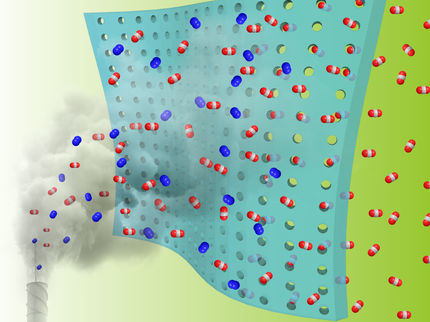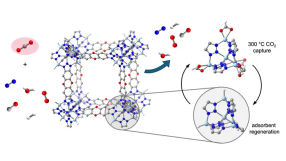Emissions and costs of power plant cycling
New research from the Energy Department’s National renewable energy Laboratory (NREL) quantifies the potential impacts of increasing wind and solar power generation on the operators of fossil-fueled power plants in the West. To accommodate higher amounts of wind and solar power on the electric grid, utilities must ramp down and ramp up or stop and start conventional generators more frequently to provide reliable power for their customers – a practice called cycling.
The study finds that the carbon emissions induced by more frequent cycling are negligible (<0.2%) compared with the carbon reductions achieved through the wind and solar power generation evaluated in the study. Sulfur dioxide emissions reductions from wind and solar are 5% less than expected because of cycling of fossil-fueled generators. Emissions of nitrogen oxides are reduced 2% more than expected. The study also finds that high levels of wind and solar power would reduce fossil fuel costs by approximately $7 billion per year across the West, while incurring cycling costs of $35 million to $157 million per year. For the average fossil-fueled plant, this results in an increase in operations and maintenance costs of $0.47 to $1.28 per megawatt-hour (MWh) of generation.
“Grid operators have always cycled power plants to accommodate fluctuations in electricity demand as well as abrupt outages at conventional power plants, and grid operators use the same tool to accommodate high levels of wind and solar generation,” said Debra Lew, NREL project manager for the study. “Increased cycling to accommodate high levels of wind and solar generation increases operating costs by 2% to 5% for the average fossil-fueled plant. However, our simulations show that from a system perspective, avoided fuel costs are far greater than the increased cycling costs for fossil-fueled plants.”
Phase 2 of the Western Wind and Solar Integration Study (WWSIS-2) is a follow up to the WWSIS released in May 2010, which examined the viability, benefits, and challenges of integrating high levels of wind and solar power into the western electricity grid. WWSIS found it to be technically feasible if certain operational changes could be made, but the first study raised questions about the impact of cycling on wear-and-tear costs and emissions.
To calculate wear-and-tear costs and emissions impacts for the new study, NREL designed five hypothetical scenarios to examine generating up to 33% wind and solar energy on the U.S. portion of the Western Interconnection power system for the year 2020. This is equivalent to a quarter of the power in the Western Interconnection (including Canada and Mexico) coming from wind and solar energy on an annual basis. The study models cycling impacts representing a range of wind and solar energy levels between none and 33%, and is not an endorsement of any particular level.
The study assumes a future average natural gas price of $4.60/MMBtu, significant cooperation between balancing authorities, and optimal usage of transmission capacity (i.e., not reserving transmission for contractual obligations). NREL modeled operations of the entire Western Interconnection for that year in five-minute intervals to understand potential impacts within every hour. With these assumptions, the study finds that the high wind and solar scenarios reduce CO2 emissions by 29%–34% across the Western Interconnection, with cycling having a negligible impact.
Cycling lessens the SO2 benefit by 2%–5%, so that SO2 emissions are reduced by 14%–24% in the high scenarios. These impacts are modeled on an overall Western Interconnection level, and changes on a regional basis could vary. Further, the study does not examine cycling impacts on mercury and air toxic control equipment now being retrofitted on coal units to comply with recent EPA regulations.
Cycling actually improves the NOx benefit by 1%–2%, so that NOx emissions are reduced by 16%–22% in the high scenarios. This is because the average coal plant in the West has a lower NOx emissions rate at partial output than at full output.
"Adding wind and solar to the grid greatly reduces the amount of fossil fuel — and associated emissions — that would have been burned to provide power,” Lew said. “Our high wind and solar scenarios, in which one-fourth of the energy in the entire western grid would come from these sources, reduced the carbon footprint of the western grid by about one-third. Cycling induces some inefficiencies, but the carbon emission reduction is impacted by much less than 1%.”
WWSIS-2 does not consider other factors such as capital costs of construction for wind, solar, fossil-fueled power plants, or transmission. These costs are significant, but outside the scope of this study, which focuses on operations.
“From a system perspective, high proportions of wind and solar result in lower emissions and fuel costs for utility operators,” Lew said. “The potential cycling impacts offset a small percentage of these reductions.”
According to the study, on average, 4 MWh of renewables displace 1 MWh of coal generation and 3 MWh of natural gas. The biggest potential cycling impact is the significant increase in ramping of coal units. Other findings include:
- Because of sunset and sunrise, solar power creates the biggest ramping needs on the grid in this study. However, because we know the path of the sun through the sky every day of the year, system operators can predict these large ramping needs and plan accordingly. Solar variability due to fast-moving clouds is much less predictable, but it creates relatively smaller ramping needs.
- Errors in day-ahead wind forecasts can make it challenging for operators to decide which power plants need to be online the next day. However, because forecast accuracy increases four hours ahead compared with 24 hours ahead, a four-hour-ahead decision on whether to start up those power plants that can be ramped up relatively quickly can help to mitigate these forecast errors.
- Despite the differences between wind and solar in terms of grid operations, the study finds their impacts on system-wide operational c






























































